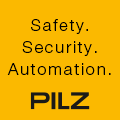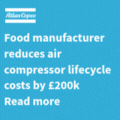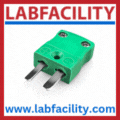
Posted to News on 17th Dec 2013, 15:16
New control automation for CIP/SIP systems from Optimal
Optimal Industrial Automation has developed a flexible control automation system for Clean-in-Place (CIP) and Steam-in-Place (SIP) systems. Well known for optimising Life Science and other food and chemical process industry manufacturing equipment, Optimal has used its experience and knowledge to develop a range of control systems specifically for CIP / SIP applications, resulting in a more reliable process, improved productivity and reduced operating costs.
CIP and SIP systems, designed for automatic cleaning and disinfecting without major disassembly and assembly work, usually require a process shutdown. By using expert design techniques, however, Optimal is able to supply systems that isolate and clean individual sections of plant while the remainder continues in production, thereby ensuring higher plant usage. This method also reduces maintenance costs and when combined with a liquid recovery system for recycling the cleaning solution, can ensure materials and labour costs are minimised, as well as reducing any environmental impact.
This is a concept that dates back to the 1950s, when it was developed for the dairy industry to allow all the pipe work and equipment involved to be cleaned after each milking period. Since then, though, the process has been expanded and refined, with full integration to the production plant now commonplace.
This technology is crucial for many industries including food & beverage, pharmaceutical, cosmetics, biotechnology and health care, where the processing environment must be hygienic or aseptic, hence any advances in systems technology have a very broad application base and a large potential impact on the efficiency of a variety of process industries. CIP systems are available in a multitude of configurations, but common within the pharmaceutical and life sciences industries for example are multi-tank systems, which are used as single-use systems; this requires the tanks to be drained between programs to avoid cross-contamination. Each of the stainless steel tanks holds a quality of water, such as DI (de-ionised water), WFI (hot or cold water for injection) and RO (water for reverse osmosis).
The actual washing sequence is controlled by an operational panel located on the CIP unit and each Optimal system can vary in complexity from a simple manual valve system with interlocks through to a fully integrated system using a PLC and SCADA layer, automated valves and an HMI. The design of the control system is critical to ensuring that the equipment has been properly washed and cleaned, as well as recording the relevant data for validation requirements.
Optimal has been involved in producing state-of-the-art control systems as well as legacy control systems for older equipment for over 25 years, and with over 100 CIP/SIP installations for major clients across the world the company has consolidated its offering into easily specified packages. A "stage 1' system offers a moderate level of automation using a single HMI screen which provides manual as well as fully automatic control over a single-use system. This configuration includes a recipe system as well as real-time trending and real-time parameter display, with the additional benefit of a data logging facility for batch reports.
Efficient control system
Most industries employing a CIP/SIP system are looking to reduce operating costs and optimise production processes, and part of this can be achieved by installing the most efficient control system on the CIP/SIP plant, but flexibility is also key and keeping the user interface simple to use can be just as important. Optimal has recently installed a "stage 2' system for a pharmaceutical company which comprised a fully integrated SIP/CIP system for cleaning mobile processing vessels.
This system used a Siemens PLC together with a SCADA system for control and display functionality. The system not only had to control the complete CIP and SIP cycle for the target vessel and log all the salient data, but also had to track which of the vessels had been cleaned, which cleaning cycle had been used and the date of cleaning. All this data was then used to validate the vessel's use in production via a barcode system.
A "stage 3' system which incorporates all of the above but adds a recovery system has recently been built for a food manufacturer which required a new CIP system that was economical in its use of chemicals and water. In conjunction with a mechanical pipe work specialist, Optimal designed and manufactured a complete automated CIP system that used a water recovery system that was both effective and efficient. A Siemens PLC system was used again, with the CIP set parameters being made available on the host control system's SCADA.
Optimal continues to develop complete systems for new clients who are now required to employ reproducible and consistent manufacturing and cleaning methods with sufficient process control, monitoring and batch documentation to meet validation requirements. With the ability to integrate a new CIP/SIP system into the existing manufacturing process with the minimum of client input, Optimal's rationalised range of CIP/SIP automation packages in three stages delivers to these exacting requirements.
To learn more about control automation for CIP and SIP systems, please visit www.optimal-ltd.co.uk.
Optimal Industrial Automation Ltd
Goodrich Close
Westerleigh Business Park
BS37 5YT
UNITED KINGDOM
44 1454 333222





